I've got some data in a table, and one of the columns is a Variant which contains a ree of JSON data. I can successfully flatten arrays, and arrays within arrays to access data therein but I'm struggling with flattening key-value pairs to access the value for a given key.
I've seen the docs at https://docs.snowflake.net/manuals/user-guide/json-basics-tutorial.html mapping this onto my use case results in NULL values in the results.
My variant is show in part below - In particular it's values like MatchStatus and the key/values under Variables that I'm interested in extracting.
Thanks for any helpful suggestions.
